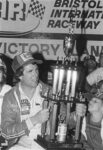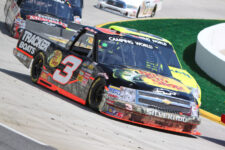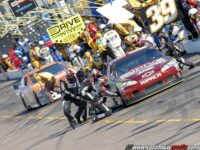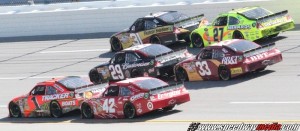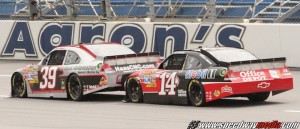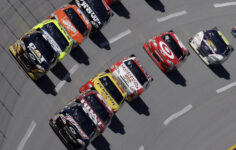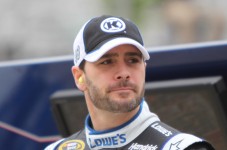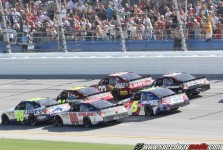Kyle Busch won the Bully Hill Vineyards 200 in dominating fashion, leading 140 out of 150 laps en route to his team’s third Camping World Truck Series victory in five races in the 2011 campaign, along with his second straight victory in sponsor Dollar General’s backyard. “It was a really good race.” said an ecstatic Kyle Busch. “The guys at the shop did a great job and brought a great piece of equipment out here to the track. The clean air really helped us out most of the race and with about ten to go, Hornaday got a jump on us on the restart and got along-side of our spoiler and took a little air off of me and got around us, but we got a caution and we thought we were in a good position on the restart. So we did the same thing that Hornaday did on the previous restart and we got a good run on him in turns one and two and sailed by him in turn three. It would have been a shame had we lost today. The guys worked so hard, and our pit-stops were great and we wored really hard to come away with the win.”
[media-credit name=”Joe Dunn” align=”alignright” width=”225″]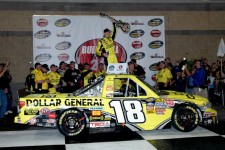 [/media-credit]On Lap 114, Kyle Busch led his 20,000th career lap in NASCAR national competition, which includes Sprint Cup, Nationwide, and Camping World Truck Series competition. But the win wasn’t without its share of drama. On a late race restart with eight laps to go, Ron Hornaday Jr. overtook him on the restart, but a spin by Max Papis with seven laps to go would bunch up the field one last time, as the race restarted with three laps remaining and in the exit of turn 2, Busch retook the lead from Hornaday Jr. and never looked back to score his 26th career Camping World Truck Series win and 11th career win as an owner by 1.061 seconds over Nelson Piquet Jr., who came home a surprising second place with Timothy Peters in third. Hornaday Jr. faltered to fourth in the final run-down, with James Buescher rounding out the top five.
[/media-credit]On Lap 114, Kyle Busch led his 20,000th career lap in NASCAR national competition, which includes Sprint Cup, Nationwide, and Camping World Truck Series competition. But the win wasn’t without its share of drama. On a late race restart with eight laps to go, Ron Hornaday Jr. overtook him on the restart, but a spin by Max Papis with seven laps to go would bunch up the field one last time, as the race restarted with three laps remaining and in the exit of turn 2, Busch retook the lead from Hornaday Jr. and never looked back to score his 26th career Camping World Truck Series win and 11th career win as an owner by 1.061 seconds over Nelson Piquet Jr., who came home a surprising second place with Timothy Peters in third. Hornaday Jr. faltered to fourth in the final run-down, with James Buescher rounding out the top five.
“It was a really huge deal for us to win a race in Dollar General’s backyard. ” reflected Busch post-race. “They’ve been awesome with their support and they had a bunch of people in the stands this week-end and we had a lot of their guys on pit road and on our pit box.”
There were 5 lead changes among 4 drivers and a total of 6 cautions for 24 laps. The average speed of the race was 119.433 miles per hour.
Unofficial Results
Bully Hill Vineyards 200, Nashville Superspeedway – April 22, 2011
=================
Pos. Driver
=================
1 Kyle Busch
2 Nelson Piquet Jr. *
3 Timothy Peters
4 Ron Hornaday
5 James Buescher
6 Matt Crafton
7 Johnny Sauter
8 David Starr
9 Craig Goess *
10 Parker Kligerman *
11 Austin Dillon
12 Cole Whitt *
13 Jason White
14 Ricky Carmichael
15 Justin Johnson *
16 Justin Lofton
17 Brendan Gaughan
18 Elliott Sadler
19 Todd Bodine
20 Travis Kvapil
21 Ryan Sieg
22 Bobby Hamilton Jr.
23 Max Papis
24 Joey Coulter *
25 Justin Marks
26 Shane Sieg
27 Miguel Paludo *
28 Brad Sweet
29 Cale Gale
30 Jamie Dick
31 Clay Rogers
32 Johanna Long *
33 Chase Mattioli *
34 Nick Hoffman
35 Johnny Chapman
36 Mike Garvey


